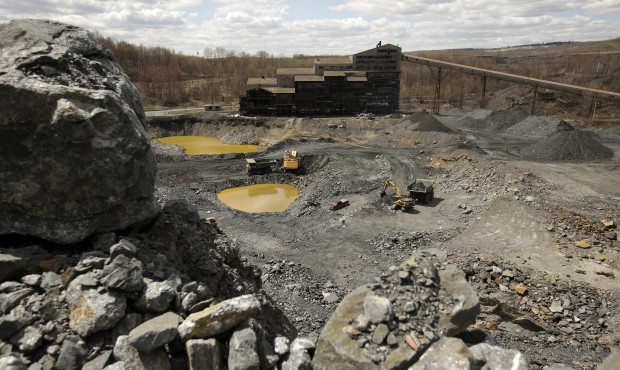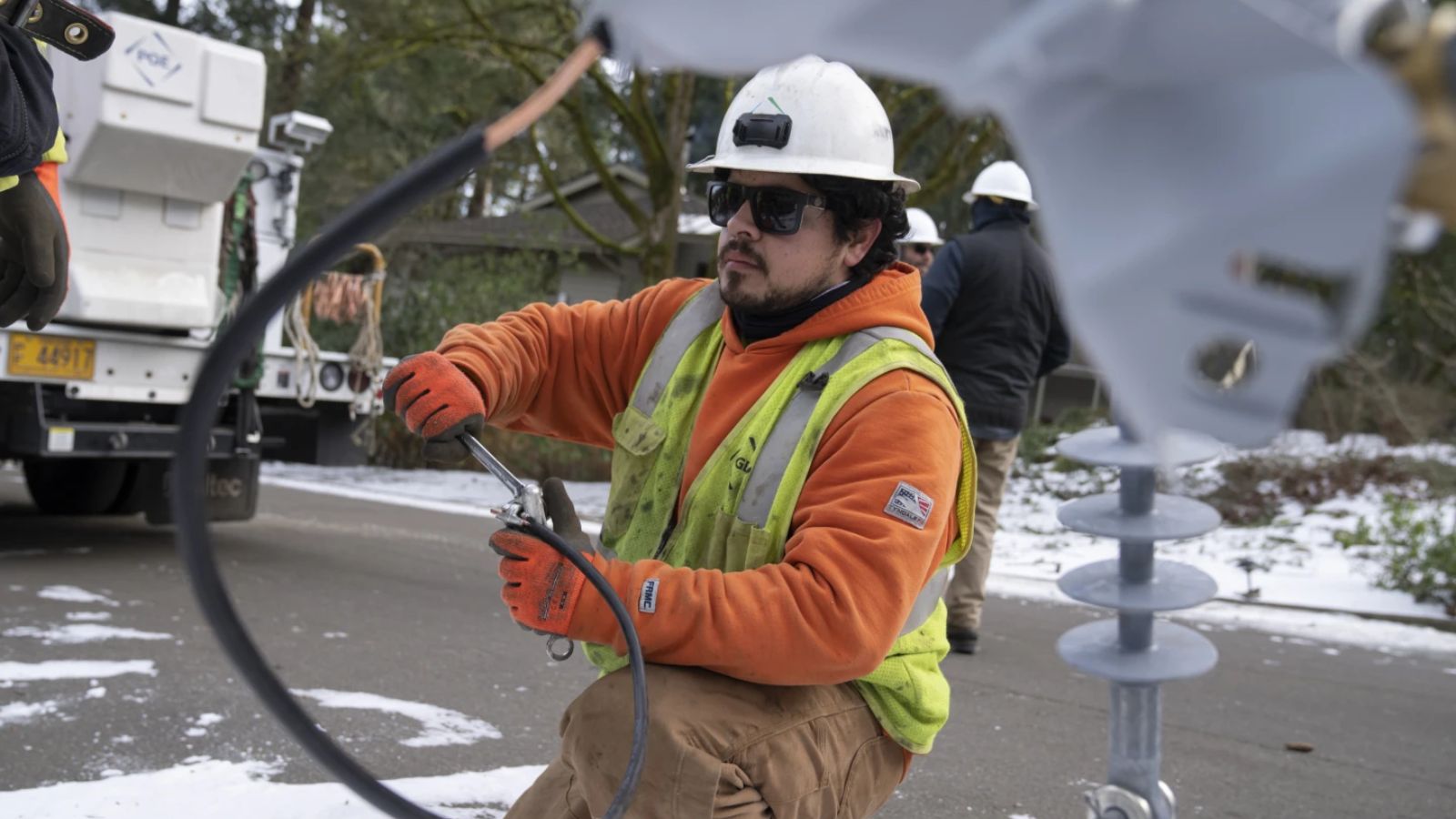Massive coal breaker, Pennsylvania’s last, is coming down
May 27, 2015, 10:12 PM

This Wednesday, April 29, 2015 photo shows the St. Nicholas Coal Breaker in Mahanoy City, Pa. When coal was king, its castle was the breaker, which crushed, washed and sized billions of tons of Pennsylvania anthracite for use in factories, foundries and homes up and down the East Coast. (AP Photo/Matt Slocum)
(AP Photo/Matt Slocum)
MAHANOY CITY, Pa. (AP) — When coal was king, its castle was the breaker — an imposing fortress that crushed, washed and sized billions of tons of Pennsylvania anthracite for use in factories, foundries and homes up and down the East Coast.
Nearly 300 breakers loomed over the coal patch more than a century ago, playing a key role in the nation’s rapid economic expansion and symbolizing the might of an industry that drew hordes of European immigrants who toiled, and often died, underground.
The breakers gradually disappeared as anthracite production began a long, steady decline after World War I. Today, only one breaker built during the historic era of anthracite mining remains standing — and now that, too, is coming down.
The St. Nicholas Breaker once held the distinction as the largest in the world, the size of a city block and capable of processing more than 12,000 tons of anthracite each day. Shuttered for more than 50 years, it now blights an area whose economy never fully recovered after anthracite’s reign came to an end.
But its hulking, asymmetrical facade continues to draw vandals, curiosity-seekers and people with a connection to mining.
“It’s part of our heritage,” said Annette Trout, the granddaughter of a coal miner, during a recent visit.
The old breaker is about 100 miles northwest of Philadelphia in a region that holds nearly all of the nation’s anthracite, a pure grade of coal that spawned the railroads, powered America’s Industrial Revolution and dominated home heating in the East. At its peak, the anthracite industry employed more than 180,000 people in just a few counties of northeastern Pennsylvania.
Coal breakers made it possible.
Invented in the 1840s, breakers transformed large, hard-to-ignite chunks of raw anthracite into a variety of smaller sizes suitable for smelting iron, propelling a locomotive, running a machine or heating a building. A conveyer carried raw coal from the top floor through a variety of crushing devices and screens to the bottom, where the finished product — given names like egg, stove, chestnut and pea, according to size — was loaded onto rail cars and taken to cities like New York, Philadelphia and Baltimore.
“Outside of the mine, the breaker was the linchpin of the coal operation,” said John Fielding, a curator with the Pennsylvania Historical and Museum Commission. “Without the breaker, anthracite coal wouldn’t have been marketable. It wouldn’t have been able to be used.”
The breakers were as hazardous as they were indispensable to an industry that saw more than 30,000 men and boys die in mine collapses, explosions and other accidents. In the 1800s and early 1900s, so-called “breaker boys” as young as 8 picked out sharp pieces of slate and other impurities with their bare hands, working for dimes a day in the dust-choked gloom.
“They breathe this atmosphere until their lungs grow heavy and sick with it,” wrote Stephen Crane, author of “The Red Badge of Courage,” who visited a coal village and memorably described the breakers he saw as “enormous preying monsters, eating of the sunshine, the grass, the green leaves.”
That was in 1894. Nearly 40 years later, St. Nicholas opened as the crown jewel of a relatively safer, more modern anthracite industry. The breaker and its twin at Locus Summit operated around the clock to meet the nation’s dwindling but still substantial need for anthracite.
Ed Tobin, 88, whose four decades in the coal industry included a stint at St. Nicholas, remembered it as dusty and loud, “like thunder. Boom boom boom boom boom.” He added: “Don’t let anybody kid you. You didn’t make much money, but you worked.”
Joseph Peel’s father and uncles found work at St. Nicholas after World War II, and he recalled hanging out there as a boy.
“You went to work nice and clean and came home filthy dirty. Every day it was tough,” said Peel, 68, of Mahanoy City. “But that’s the way it goes when you’re working in the coal fields and in the coal mines and in a breaker.”
Modern anthracite plants, like the one operated by Reading Anthracite a mile from St. Nicholas, process about 2 million tons a year for home heating, steelmaking and other specialty uses. But they require very few workers to operate, unlike the breakers of old, and production is a fraction of what it was when St. Nicholas roared to life more than 80 years ago.
Early last decade, there was talk of preserving the breaker, and state grant money was awarded for a study. But it would have taken tens of millions of dollars — a prohibitive sum — to turn the massive, out-of-the-way ruins into a historical attraction, and the idea was shelved.
“It was a fantastically unique building, but it was in bad shape,” said Kurt Zwiki, executive director of the Schuylkill River Heritage Area.
The site might one day give birth to something more productive. Not far away, the company that owns St. Nicholas transformed a defunct mining operation into a successful shopping center.
In the meantime, crews are slowly scrapping the breaker in a process expected to take many months.
“Am I sorry to see a facility like this and a piece of our industrial heritage go? I am,” said Brian Rich, president of Reading Anthracite, which operates a surface mine behind the breaker. But “it’s become a liability and eyesore to the community.”
Copyright © The Associated Press. All rights reserved. This material may not be published, broadcast, rewritten or redistributed.








